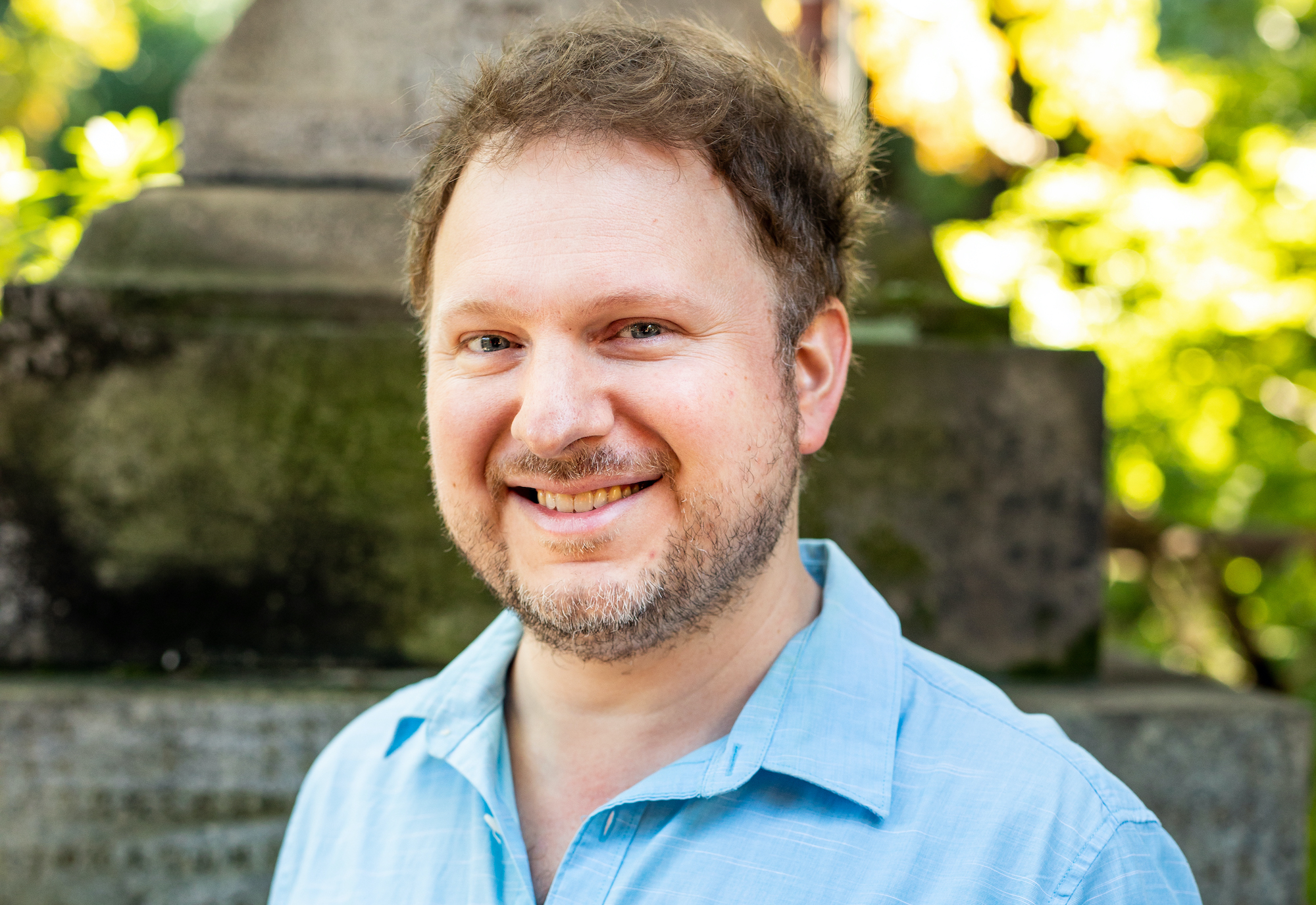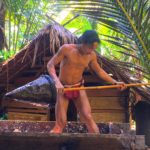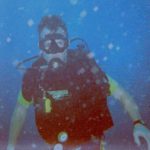Jonathan (Jon) DeHart is a Tokyo-based writer focused on travel, culture and society in Asia. He is the author of two guidebooks for Moon Travel Guides (Moon Japan and Moon Tokyo, Kyoto and Hiroshima) and a journalist with more than 500 published articles. His work has been selected for various “best of” lists by the Washington Post, The Atlantic, The Huffington Post, Foreign Policy and Real Clear World. He is currently writing a series of travel essays, mostly set in Asia, and has a few book ideas simmering on the back-burner.
How did you get started traveling?
Travel began for me while growing up, when my dad, a retired world history and geography teacher, took my family on a series of epic cross-country road trips throughout the American West during his summer breaks. My family also took many jaunts to meet relatives, camp and hike throughout the southern US and New England, and to my grandpa’s lakeside cottage in Michigan every summer.
Hat tip to my dad as well for sharing tales of his backpacking adventures in Latin America, Europe and the Middle East. Another seed was planted in the form of a cache of Asian antiques passed down from my great aunt Ruby and uncle Harold, who ran in literary and artistic circles. Harold, a photographer, painter and inventor who studied art in Paris under Man Ray in the 1920s, and Ruby had amassed a collection of wispy Japanese prints, bold paintings of Khmer dancers, and ornately carved furniture, etched with dragons and mandarins in robes, that largely ended up at my grandparents’ house. From a young age, these heirlooms linked Asia in my mind with a sense of adventure, worldliness and refinement.
Aside from quickly stepping across the Canadian border at Niagara Falls and a brief foray into Tijuana on a few of those long childhood trips, I didn’t venture overseas until college. At age 19, I visited a series of stellar European museums with a Near Eastern archaeology class. Gawping at Babylonian antiquities and exploring London, Paris, Berlin, and Rome dramatically expanded my horizons, but I returned from Europe feeling that I wanted something a bit more… different.
It was then that Asia began to weave its subtle spell. With little idea where it would lead, I chose to major in Asian Studies and took Japanese classes to fulfill the foreign language requirement. In the winter of 2004, I boarded a plane to Tokyo where I lived with a host family of five to study the language for a few months. As fate would have it, I watched Sophia Coppola’s Lost in Translation in a US theater only a few weeks before I found myself wandering down some of the same neon-lit boulevards where I’d just seen Bill Murray and Scarlett Johansson carouse on screen. A potent mix for an impressionable 21-year-old.
Those few months in Japan were a major turning point in my life. I’ve lived in Asia for the bulk of the past two decades, mostly in Japan, but also with a stint in Shanghai. During that time, I’ve roved and written about the region, from Seoul and Angkor Wat to rural Rajasthan and Kathmandu. While I’ve planted roots in Japan, I see myself moving to Southeast Asia in the next few years and deepening my ties there.
How did you get started as a writer?
Growing up, a number of teachers complimented my writing, beginning with my second-grade teacher Mrs. Dennis who remarked at the (relative) imagination that went into a story I’d written. It involved a protagonist navigating the wilds of Indonesia. Where I’d heard of that distant archipelago at age 7, I’m not sure, but I suspect my dad’s collection of National Geographic back-issues, which I incessantly pored over as a kid, played a part.
Fast forward to college when I received praise from a few professors for essays I’d written. The one that stands out to me was for a class titled Geography of Religion. For the assignment, I visited a local mosque, a Hindu temple and a synagogue, then wrote about my observations and experiences at each. In hindsight, this was my first attempt at crafting something that involved travel, albeit it local, and interaction with different cultures.
After graduating, while teaching English in Japan for a brief stint, I took an online journalism class taught by a staff reporter at The Los Angeles Times. This was the first time I formally learned to write in a structured way for a public audience.
What do you consider your first “break” as a writer?
Rather than one break, it was more a series of them. The first was breaking into a few hyperlocal webzines in Cincinnati, where I’m originally from and where I briefly lived in my mid-20s. My first paid piece involved writing about a local sneaker artist who was making waves. After landing a part-time editorial gig at one of those magazines, where I worked for about a year, I returned to Asia with fresh writing clips in hand – this time to Shanghai.
My cousin, who was well established in Shanghai’s media scene, helped me get my first full-time writing gig. And so, I joined a motley crew of young, aspiring expat scribes in the international department of a national Chinese newspaper. At the time, the paper needed a features writer for its community section, which basically meant profiling interesting local groups and examining social trends. Working for this catch-all section of the paper turned out to be a blessing. It allowed me to write long-form pieces with lots of creative freedom. My first feature I took some pride in was about the ongoing tussle between gentrification and preservation of the city’s once vibrant, gated communities known as shikumen. It was a travel piece of sorts, in that it focused on a place and interactions with its inhabitants, from shop owners to a few bewildered aunties.
After a few years in Shanghai, I returned to Tokyo and landed an editorial role at a popular current affairs webzine called The Diplomat. I churned out two pieces daily on the softer side of Asian diplomacy (arts, culture, society). During that time, I benefited from greater exposure and expanded my network to writers all over Asia, from Bangkok to Mumbai. One of those connections later introduced me to Moon.
As a traveler and story gatherer/creator, what is your biggest challenge on the road?
Getting the facts right. Taking detailed notes on the go. Capturing the feel and essence of a place in a short time. And remaining open to surprises that might upset preconceptions, then being nimble enough to overhaul a story if needed.
This calls for keeping all senses open and staying present, often while racing to and fro. This is why I prefer planting roots in one place, then taking jaunts from there, rather than roving without a base.
What is your biggest challenge in the research, writing, and editing process?
In the research phase, it’s knowing what to leave out after doing what sometimes feels like an excessively deep dive. Knowing when to stop researching is key. While writing, it’s striking the right balance between refining the language and creating the desired structure and arc so that there’s hopefully some resonance. In the editing phase, the toughest part is knowing what to cut. This often means finding a compromise between my vision and what an editor wants.
Time management is always tricky. The revision phase sometimes takes as much time, if not more, than writing the first draft. The longer the assignment, the more challenging this process becomes. For a book, handled chapter by chapter, this feels like a marathon, while an article or essay can feel like a sprint.
But if I’m being totally honest, the biggest challenge is often getting started. Staring at a blank page, especially at the start of a massive project, can feel daunting. This requires a lot of self-knowledge — when to push, when to take a break — and project management. Thankfully, it gets easier with experience, but deadlines rarely feel languorous. This is the nature of the beast.
What has been your biggest challenge from a business standpoint?
Finding motivation to pitch and find new clients can be tough sometimes with two guidebooks requiring periodic updates that are never far away. Another challenge is making the numbers add up financially while staying committed to only doing work that inspires me.
This also means learning to think like an editor, to find the right angle for a pitch, to ensure it fits a given publication’s content and style. Each writer ultimately must come up with their own system for creating ideas, pitching them, then following up. It’s an absolutely necessary step to reach the kind of escape velocity needed to make a living solely on writing.
One more challenge, particularly while doing guidebook research, is keeping costs for hotels, meals, transport, and more within budget. This requires careful logistical planning — not my forte, but I’ve developed the knack.
Have you ever done other work to make ends meet?
I’ve worked as an editor and writer for several business newswires, a newspaper, a print magazine, and a handful of webzines. I’ve also done content marketing for clients like BBC Travel and worked as a consultant on social, cultural and business trends in Asia for behavioral insights and cultural consulting agencies.
Leveraging the expertise I’ve gained by writing the Japan guides for Moon, I offer bespoke trip-design services for travelers coming to the country. More recently, I’ve also teamed up with Journey Beyond Travel, a boutique tour operator based in Morocco that is run by fellow Moon author Lucas Peters. We’re expanding the business into Japan – soft launching soon – and plan to offer tours in Southeast Asia down the road.
What travel authors might you recommend and/or have influenced you?
This is by no means an exhaustive list, but the following writers have inspired, provoked and entertained me with their writing about place, in no particular order.
Starting close to my current home in Japan, some standouts include Donald Richie (The Inland Sea), Alan Booth (The Roads to Sata), Alex Kerr (Lost Japan), and Pico Iyer (The Lady and the Monk and Autumn Light).
Authors who have written work on other parts of Asia: Peter Matthiessen (The Snow Leopard), Lawrence Osborne (Bangkok Days and Hunters in the Dark), William Dalrymple (City of Djinns), Peter Hessler (starting with his China writings for The New Yorker), Paul Theroux (The Great Railway Bazaar and Ghost Train to the Eastern Star), the fiction and reportage of Tom Vater, Philip Cornwel-Smith (Very Thai and Very Bangkok), Pankaj Mishra (essays on India), Jeff Greenwald (Shopping for Buddhas), and Pico Iyer again (Video Nights in Kathmandu).
Elsewhere: Rolf Potts (Marco Polo Didn’t Go There and Vagabonding), Don George (miscellaneous essays), Tim Cahill (Hold the Enlightenment and Jaguars Ripped My Flesh), Orhan Pamuk (Istanbul), Bruce Chatwin (In Patagonia), Paul Bowles (writings on Morocco in general), Henry Miller (The Colossus of Maroussi), J. Maarten Troost (The Sex Lives of Cannibals), P.J. O’Rourke (essays), Jan Morris (essays), and many, many more.
That’s a start at least. Reading, travel and otherwise, is an ongoing project, and my stack of books to read is much longer than the list of books I’ve read!
What advice and/or warnings would you give to someone who is considering going into travel writing?
First things first, get clear on where you’d like to be in 5-10 years. Backwards engineer a plan to reach that goal, then work towards that. If you can afford it, take a writing class or workshop, whether in person or online. This will expose you to other writers’ work and lay a foundation to build on. I highly recommend Rolf’s Paris workshop. If your budget is more modest, Media Bistro is a solid resource, as is The Wordling. The Six-Figure Travel Writing Road Map by Gabi Logan is a great book with smartly devised action steps.
Once you’ve grappled with the basics, create a system for pitching and following up with editors. If it’s slow at first, take heart and be willing to knock on a lot of doors. Don’t take rejection personally. Early on, assignments come in dribs and drabs. If you have raw talent, persistence pays off. Early on, take any break as a serious opportunity. Use each new assignment as an opportunity to build a bridge to the next and so on. And of course, be dependable, always. If you are, you’ll gradually strengthen ties with some of the editors you work with. This will result in recurring, or at least semi-regular, assignments.
Beyond writing, get clear on your relationship with social media. I’ll admit that marketing is not my favorite activity, but at least giving it a meaningful nod is a necessary part of the job.
It pays to choose a niche, whether it be a specific location, topic, or style of travel. In my own case, focusing on a region (Asia) has helped me gain traction. Anywhere you go, there will be local outlets hungry for good writing. Getting your foot in the door at a city magazine or regional newspaper will be much easier than breaking into an elite international publication.
Network, network, network. The publishing world is a highly relational one. Getting to know editors and other writers, and showing a willingness to help wherever you can, is one of the best ways to find work. I’ve also had a few breakthroughs by teaming up with photographers on assignments as well.
Speaking of photography, it pays to build complementary skills (photography, video, podcasting, etc.) so you can both compound and diversify your income. Similarly, diversify your assignments to avoid boredom and fatigue. One more financial note: savings will help you get through lean times, which will inevitably come. Consider basing yourself somewhere with a lower cost of living, which will allow you to focus more on writing than paying bills. I say this from experience.
Most of all, read and write, then read and write some more. You’ll only grow as a writer by sitting down to do the work again and again.
What is the biggest reward of life as a travel writer?
Freedom, adventure and the chance to observe, explore and tell stories about beautiful, sometimes strange places and the fascinating people who live in them. A chance to get paid to do creative, contemplative work that aligns with my passions, values, and skills.
This all adds up to a much richer experience of life, a more nuanced view of the world, and a chance to make the unfamiliar a bit more familiar. It also comes with the added bonus of a diverse network of friends and associates from around the globe, and a sense that this planet we share is not as big and alienating as we sometimes imagine it to be.





